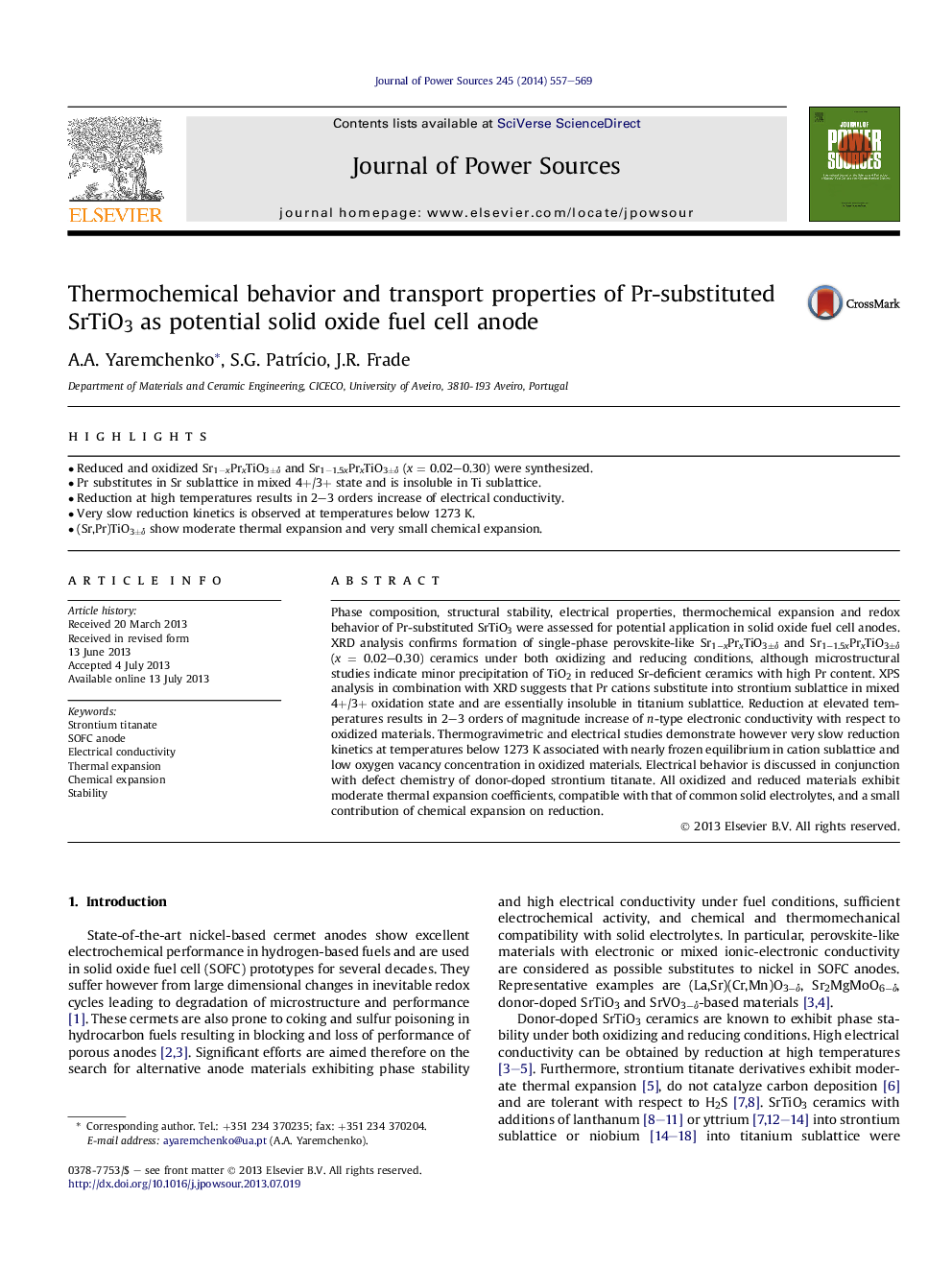| Article ID | Journal | Published Year | Pages | File Type |
|---|---|---|---|---|
| 7738720 | Journal of Power Sources | 2014 | 13 Pages |
Abstract
Phase composition, structural stability, electrical properties, thermochemical expansion and redox behavior of Pr-substituted SrTiO3 were assessed for potential application in solid oxide fuel cell anodes. XRD analysis confirms formation of single-phase perovskite-like Sr1âxPrxTiO3±δ and Sr1â1.5xPrxTiO3±δ (x = 0.02-0.30) ceramics under both oxidizing and reducing conditions, although microstructural studies indicate minor precipitation of TiO2 in reduced Sr-deficient ceramics with high Pr content. XPS analysis in combination with XRD suggests that Pr cations substitute into strontium sublattice in mixed 4+/3+ oxidation state and are essentially insoluble in titanium sublattice. Reduction at elevated temperatures results in 2-3 orders of magnitude increase of n-type electronic conductivity with respect to oxidized materials. Thermogravimetric and electrical studies demonstrate however very slow reduction kinetics at temperatures below 1273 K associated with nearly frozen equilibrium in cation sublattice and low oxygen vacancy concentration in oxidized materials. Electrical behavior is discussed in conjunction with defect chemistry of donor-doped strontium titanate. All oxidized and reduced materials exhibit moderate thermal expansion coefficients, compatible with that of common solid electrolytes, and a small contribution of chemical expansion on reduction.
Keywords
Related Topics
Physical Sciences and Engineering
Chemistry
Electrochemistry
Authors
A.A. Yaremchenko, S.G. PatrÃcio, J.R. Frade,
